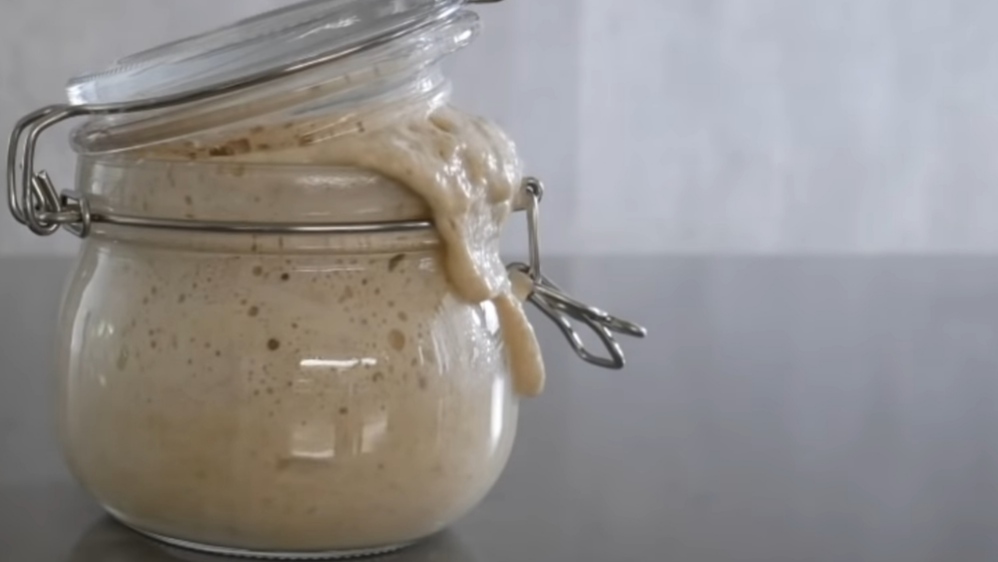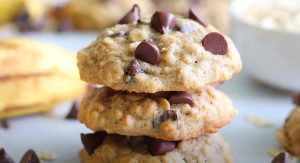Herman sourdough starter is a unique and rewarding way to create delicious homemade bread with a tangy flavor. This starter requires patience and a bit of dedication, but the end result is well worth the effort. Over the course of fifteen days, you'll nurture and feed this starter, ultimately creating a versatile base for various baked goods.

The ingredients for this recipe are mostly common, but you may need to make a special trip to the supermarket for active dry yeast if you don't already have it in your pantry. While all-purpose flour and white sugar are staples in most kitchens, active dry yeast is essential for the fermentation process and might not be on hand.
Ingredients for Herman Sourdough Starter Recipe
active dry yeast: This is a type of yeast used in baking to help dough rise. It needs to be dissolved in warm water to activate.
warm water: Essential for dissolving the yeast and creating the right environment for fermentation.
all-purpose flour: Provides the structure for the starter, allowing yeast to feed and grow.
white sugar: Feeds the yeast, helping it to ferment and develop the sourdough flavor.
milk: Adds richness and additional sugars for the yeast to feed on, enhancing the starter's flavor.
One reader, Harmon Judy says:





The Herman sourdough starter recipe is fantastic! It's easy to follow and produces a wonderfully tangy starter. My bread has never tasted better, and I love the tradition of sharing it with friends. Highly recommend!
Techniques for Creating a Thriving Sourdough Starter
How to dissolve yeast: Dissolve the yeast in warm water by sprinkling it over the surface and letting it sit for a few minutes before stirring to ensure it is fully dissolved. How to mix until smooth: Combine the ingredients and stir until there are no lumps, creating a smooth consistency. How to store in a warm place: Place the container in an area of your kitchen that maintains a warm temperature, such as near a stove or in an oven with just the light on. How to refrigerate: Place the container in the refrigerator to slow down the fermentation process. How to divide in half: Use a measuring cup to evenly split the starter into two equal portions. How to feed starter: Add the specified amounts of sugar, flour, and milk to the starter and stir until the mixture is smooth. How to reserve one cup of the starter: Measure out one cup of the starter and keep it in the refrigerator for future use.
How To Make Herman Sourdough Starter
Make a homemade version of this herman sourdough with active dry yeast, sugar, flour, and milk combined together for a sweet sourdough starter.
Serves:
Ingredients
- 2¼tspactive dry yeast
- 2cupswarm water,110 degrees F
- 2cupsall-purpose flour
- ¼cupwhite sugar
- 1cupwhite sugar,divided
- 2cupsall-purpose flour,divided
- 2cupsmilk,divided
Instructions
-
In a large glass or plastic container, dissolve the yeast in warm water. Stir in the flour and sugar, mix until smooth. Cover loosely and store in a warm place overnight.
-
The next day, stir and refrigerate.
-
Stir once each day for the next four days. On the fifth day, stir, then divide in half. Give half away with feeding instructions.
-
Feed starter with 1/2 cup white sugar, 1 cup flour, and 1 cup milk. Stir until smooth. Cover and place in the refrigerator. Stir once each day for the next four days.
-
On the tenth day feed again with 1/2 cup white sugar, 1 cup flour, and 1 cup milk. Return to the refrigerator and stir once each day for the next four days.
-
It will be ready on the fifteenth day. Reserve one cup of the starter in the refrigerator and continue to follow the stir and feed cycle.
Nutrition
- Calories: 389.30kcal
- Fat: 2.68g
- Saturated Fat: 1.25g
- Monounsaturated Fat: 0.60g
- Polyunsaturated Fat: 0.38g
- Carbohydrates: 82.33g
- Fiber: 1.99g
- Sugar: 34.44g
- Protein: 8.83g
- Cholesterol: 6.10mg
- Sodium: 37.85mg
- Calcium: 86.06mg
- Potassium: 158.76mg
- Iron: 2.96mg
- Vitamin A: 28.06µg
- Vitamin C: 0.00mg
Mastering the Art of Feeding Your Sourdough Starter
When dissolving the yeast in warm water, ensure the water is between 100-110°F (37-43°C) to activate the yeast effectively without killing it.
Time-Saving Tips for Herman Sourdough Starter Recipe
Prepare ingredients in advance: Measure and set aside all ingredients before starting. This minimizes interruptions and keeps the process smooth.
Use a stand mixer: A stand mixer can help you quickly and evenly mix the yeast, flour, and sugar, saving you time and effort.
Batch feedings: Combine the feeding steps by preparing the sugar, flour, and milk in advance. This way, you can quickly add them to the starter when needed.
Set reminders: Use your phone or a kitchen timer to remind you to stir and feed the starter. This ensures you stay on track without constantly checking the recipe.
Substitute Ingredients For Herman Sourdough Starter Recipe
active dry yeast - Substitute with instant yeast: Instant yeast can be used in place of active dry yeast, but it may require less time to proof.
warm water - Substitute with lukewarm milk: Lukewarm milk can activate yeast similarly to warm water and adds a richer flavor.
all-purpose flour - Substitute with bread flour: Bread flour has a higher protein content, which can result in a chewier texture.
white sugar - Substitute with honey: Honey can provide a similar sweetness and adds a unique flavor profile.
white sugar - Substitute with brown sugar: Brown sugar adds a deeper, molasses-like flavor and can enhance the richness of the starter.
all-purpose flour - Substitute with whole wheat flour: Whole wheat flour can add a nuttier flavor and increase the nutritional content.
milk - Substitute with buttermilk: Buttermilk adds a tangy flavor and can help with the fermentation process.
Presenting Your Herman Sourdough Starter
Use a clear glass container: Present the sourdough starter in a clear glass jar to showcase the beautiful, bubbly texture. This allows the natural fermentation process to be visually appreciated.
Garnish with fresh herbs: Place a sprig of rosemary or thyme on top of the jar lid. This adds a touch of elegance and a hint of aroma that complements the sourdough.
Accompany with artisan bread: Serve a slice of freshly baked artisan bread alongside the starter. This not only demonstrates the potential of the starter but also provides a sensory experience of the final product.
Include a small bowl of dipping oil: Offer a small bowl of extra virgin olive oil with a sprinkle of sea salt and cracked black pepper. This enhances the tasting experience and pairs well with the bread.
Add a personalized label: Attach a handcrafted label to the jar with the name of the starter and the date it was created. This adds a personal touch and a sense of history to the presentation.
Use a wooden serving board: Place the jar, bread, and dipping oil on a rustic wooden board. This creates a cohesive and visually appealing presentation that highlights the artisanal nature of the sourdough starter.
Incorporate a small bowl of flour: Include a small bowl of all-purpose flour as part of the presentation. This symbolizes the main ingredient and adds a tactile element to the display.
Provide a recipe card: Offer a beautifully designed recipe card with instructions on how to maintain and use the sourdough starter. This not only educates but also engages the audience, making them feel part of the process.
Highlight the fermentation process: Use a small chalkboard or card to briefly explain the fermentation process and the benefits of using a sourdough starter. This adds an educational element to the presentation.
Finish with a linen napkin: Place a folded linen napkin under the jar and other elements. This adds a touch of sophistication and completes the elegant presentation.
Essential Tools for Making a Sourdough Starter
Large glass or plastic container: This is used to mix and store the sourdough starter. It needs to be large enough to allow the starter to expand.
Measuring spoons: These are essential for accurately measuring the yeast and sugar.
Measuring cups: These are used to measure the water, flour, and milk accurately.
Wooden spoon or spatula: This is used for stirring the mixture to ensure it is smooth.
Plastic wrap or loose-fitting lid: This is used to cover the container, allowing the starter to breathe while keeping contaminants out.
Refrigerator: This is where the starter will be stored to slow down the fermentation process.
Warm place: This is needed for the initial fermentation process to activate the yeast. It can be a spot in your kitchen that is consistently warm.
Small bowl: This can be used to dissolve the yeast in warm water before adding it to the main container.
Spoon: This is used for stirring the starter each day.
Storing and Freezing Your Herman Sourdough Starter
Here are the detailed instructions for storing and freezing herman sourdough starter:
- To store the starter in the refrigerator, place it in a clean, airtight container with a tight-fitting lid. The starter can be kept in the refrigerator for up to 2 weeks without feeding. If you plan to keep it longer, feed it once a week with equal parts flour and water (1/2 cup each) to maintain its activity.
- If you notice a layer of liquid (hooch) on top of the starter, simply stir it back in or pour it off before feeding.
- To freeze the starter for long-term storage, first feed it with equal parts flour and water (1/2 cup each) and let it sit at room temperature for 2-3 hours until it becomes active and bubbly.
- Measure out 1 cup portions of the active starter and place them in freezer-safe containers or resealable plastic bags. Label the containers or bags with the date and amount of starter.
- Freeze the starter for up to 3 months. When you're ready to use it, thaw the starter in the refrigerator overnight.
- Once thawed, feed the starter with equal parts flour and water (1/2 cup each) and let it sit at room temperature until it becomes active and bubbly again (usually within 24 hours). You may need to repeat this feeding process a few times to fully revive the starter.
- Always use clean utensils and containers when handling the starter to prevent contamination.
Fascinating Facts About Sourdough Starters
A unique aspect of the Herman sourdough starter is its communal nature. Traditionally, it is shared among friends and family, creating a sense of connection and continuity. This starter can be passed down through generations, with each batch carrying a bit of history and tradition.
Is Making Your Own Sourdough Starter Cost-Effective?
The Herman sourdough starter is quite cost-effective for a household. With basic ingredients like flour, sugar, milk, and yeast, the total cost is minimal. The initial setup might cost around $5-$7, and maintaining the starter is even cheaper. Considering the longevity and versatility of the starter, it can be used for various baked goods like bread, pancakes, and muffins. Overall Verdict: 9/10. Approximate cost for a household of 4 people: $5-$7.
Is Herman Sourdough Starter Healthy or Unhealthy?
The Herman sourdough starter recipe is not particularly healthy due to its high sugar content. The recipe calls for a total of 1¾ cups of white sugar, which is a significant amount considering the other ingredients are primarily flour, water, and milk. Consuming excessive amounts of added sugars can contribute to various health issues, such as obesity, diabetes, and heart disease.
To make this recipe healthier, consider the following suggestions:
- Reduce the amount of sugar used in the recipe. Start by cutting the sugar in half and adjust to your taste preferences.
- Replace white sugar with a natural sweetener like honey or maple syrup, which contain some beneficial nutrients.
- Use whole wheat flour instead of all-purpose flour to increase the fiber content and nutritional value of the starter.
- Experiment with non-dairy milk alternatives, such as almond milk or oat milk, to accommodate dietary restrictions or preferences.
- Incorporate additional healthy ingredients into the bread made with this starter, such as seeds, nuts, or dried fruits, to boost its nutrient profile.
Editor's Take on Herman Sourdough Starter Recipe
This Herman sourdough starter recipe is a delightful blend of simplicity and tradition. The process of feeding and stirring over fifteen days cultivates a robust and flavorful starter, perfect for a variety of baked goods. The use of both flour and sugar adds a unique sweetness, setting it apart from typical sourdough starters. The instructions are clear and manageable, even for beginners. However, patience is key, as the extended fermentation period requires dedication. Overall, this recipe is a rewarding endeavor for those looking to explore the art of sourdough baking.
Enhance Your Herman Sourdough Starter Recipe with These Unique Side Dishes:
Delicious Alternatives to Herman Sourdough Starter Recipe
Why trust this Herman Sourdough Starter Recipe:
This Herman sourdough starter recipe has been cherished for generations, ensuring a reliable and flavorful base for your baking. The step-by-step instructions are easy to follow, making it perfect for both beginners and seasoned bakers. By using simple ingredients like flour, sugar, and milk, you can create a versatile starter that enhances the taste and texture of your bread and pastries. Trust this recipe for its time-tested method and enjoy the delightful results in your homemade creations.
Was this page helpful?
Have your own special recipe to share? Submit Your Recipe Today!













